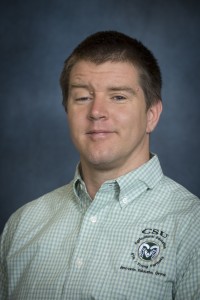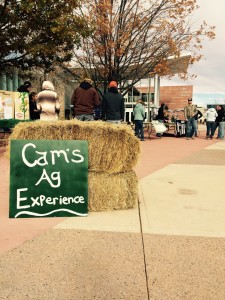
The general public doesn’t always have a clear sense of where their food comes from or what new innovations in agriculture will help make food more available, safer and nutritious. Helping people gain a greater understanding of agriculture is what Michael Martin, assistant professor of agricultural and resource economics, and his agricultural literacy students at Colorado State University work towards each and every day.
Wide-variety of career opportunities
“Students enrolled in our Ag Literacy program have a wide variety of career opportunities,” said Martin. “Some students end up working in production agriculture industries, some become teachers, and others take jobs in farm-to-table or organic operations.”
One goal of the Ag Literacy program to ensure that students are effective at educating the public through the development of a broad education in agricultural techniques, approaches and innovations. The ability to think critically and employ a variety of communication skills are essential for students who must engage with their local communities.
Community-based projects
Throughout their time in the program, students develop a number of community-based education projects, and one such project was CAM’s Ag Experience: The Grocery Story which students held on the Lory Student Center Plaza in November. Several stations, staffed by students, were set up around the plaza that described different agricultural components of our daily diet. A few of the stations in included bread (the Agronomy Club), dairy (the Collegiate Farm Bureau), and high fructose corn syrup (the Ag Ed Alliance).
 “It was awesome to see students from all the departments within the College of Agricultural Sciences come together to help educate our fellow Rams about where their food really comes from,” said Brittany Boggs, a sophomore studying agricultural education. “I think it is so important that every agriculturist has the ability to educate the consumers about our industry since so many people have concerns with it. I hope to see this event grow and become even more successful next year.”
“It was awesome to see students from all the departments within the College of Agricultural Sciences come together to help educate our fellow Rams about where their food really comes from,” said Brittany Boggs, a sophomore studying agricultural education. “I think it is so important that every agriculturist has the ability to educate the consumers about our industry since so many people have concerns with it. I hope to see this event grow and become even more successful next year.”
The Agricultural Literacy program combines both classroom learning as well as hands-on experiences like the event on the plaza. Students learn methodology that focuses on how to teach people about agriculture and enroll in a practicum which could take the form of an internship, a field experience, or a research project.
Empowering students
“I want to empower these students to make a difference whether it is through outreach and engagement, non-profit work, or through a value-added part of classroom curriculum and skills,” said Martin. “Our students take what they have learned and apply that knowledge in tangible ways including volunteering in their communities, helping young students develop science fair projects, or interacting with attendees of the National Western Stock Show.”
The Agricultural Literacy program is housed in the Department of Agricultural and Resource Economics within the College of Agricultural Sciences. For more information visit: http://ageduc.agsci.colostate.edu/.